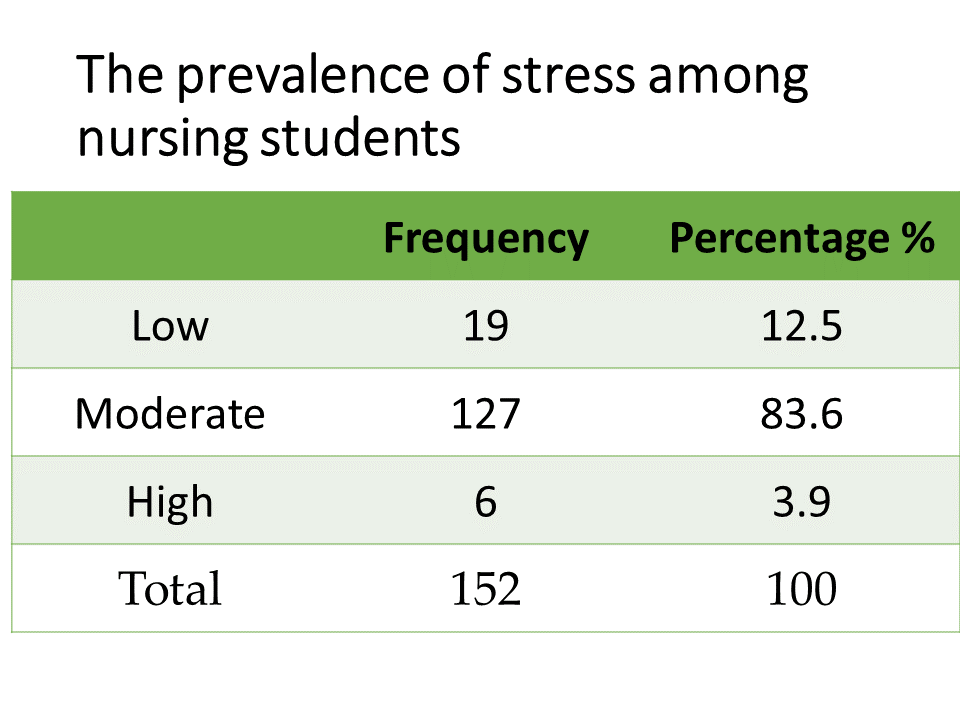Stress-Associated Factors among Nursing Students In Higher Education in East Malaysia
DOI:
https://doi.org/10.23917/bik.v17i1.3331Keywords:
stress, academic factor, perceived stress scale, nursing student, Malaysia, NursingAbstract
Psychological distress among students leads to less productivity, reduced quality of life, and learning difficulties and may negatively affect patient care. Objective: The main aim of this study is to identify stress factors among UMS students.Methodology: A cross-sectional descriptive, universal sampling of 152 student nurses was included in this study. Respondents were given a self-answered structured questionnaire conclusive of socio-demographic data, the Perceived Stress Scale (PSS-10), and factors associated with stress. A descriptive analysis was used to analyze the data. Results & Findings: Out of 152 students, the majority have moderate stress (83.6 %), about 12.5 % have low-stress levels, and only 3.9 % of respondents have high stress levels. The results show that students experienced or reported significantly higher academic factors (24.9 %), followed by interpersonal factors (24.6 %) Conclusion: According to study findings, stress is most prevalent among nursing students and is attributed to academic and interpersonal causes. It is advised to use proactive learning strategies, peer and staff mentoring and modeling, professional networks and social support, psychological support, and faculty role and behavior.
Downloads
References
Abasimi, E., Atindanbila, S., Mahamah, M. M., & Gai, X. (2015). The Experience of Stress among Nursing Students in Nursing Training Colleges in Tamale, Ghana. International Journal of Psychology and Behavioral Sciences p-ISSN: 2163-1948 e-ISSN: 2163-1956, 89-97. http://article.sapub.org/10.5923.j.ijpbs.20150502.06.html
Aedh, A. I., Elfaki, N. K., & Mohamed, I. A. (2015). Factors associated with stress among nursing students. IOSR Journal of Nursing and Health Science (IOSR-JNHS)e-ISSN: 2320–1959.p- ISSN: 2320–1940 Volume 4, Issue 6 Ver. VI, 33-38. https://www.iosrjournals.org/iosr-jnhs/papers/vol4-issue6/Version-6/E04663338.pdf
Afzal, M., Waqas, A., Hussain, M., & Schar, N. (2016). Sources of Stress among the Nursing Students of Private Universities of Pakistan. South American Journal of Nursing, vol (2): 1-9. https://doi.org/10.21522/TIJNR.2015.02.01.Art004
Al-Zayyat, A. S., & Al-Gamal, E. (2004). Perceived stress and coping strategies among Jordanian Nursing students during clinical practice in psychiatric/mental health courses. International Journal of Mental Health Nursing 23, 326-335. https://doi.org/10.1111/inm.12054
Basu, M., Sinha, D., Ahamed, A., Chatterjee, S., & Misra. (2016). Depression, Anxiety, Stress among nursing students of Kolkata: a cross sectional study. Journal of Preventive Medicine and Holistic Health, 2(2):54-60. https://www.jpmhh.org/article-details/3189
Cohen, S., Kamarck, T., & Mermelstein, R. (1983). A global measure of perceived stress. Journal of Health and Social Behaviour 24(4), 385-396. https://doi.org/10.2307/2136404
Edwards, D., Hawker, C., Carrier, J., & Rees, C. (2015). A systematic review of the effectiveness of strategies and interventions to improve the transition from student to newly qualified nurse. International Journal of Nursing Studies, 1254-1268. https://doi.org/10.1016/j.ijnurstu.2015.03.007
Evans, W., & Kelly, B. (2004). Pre-registration diploma student nurse stress and coping measures. Nurse Education Today, 24(6):473-82. https://doi.org/10.1016/j.nedt.2004.05.004
Fitzgerald, A., & Konrad, S. (2021). Transition in learning during COVID-19.Student nurse anxiety,stress, and resourse support. Nursing Forum, 56 (298-304. https://doi.org/10.1111/nuf.12547
Forbes, M. O., & Hickey, M. T. (2009). Curriculum reform in baccalaureate nursing education: review of literature. International Journal of Nursing Education Scholarship, 6(1), 1 – 16. https://doi.org/10.2202/1548-923x.1797
Gibbons, C., Dempster, M., & Moutray, M. (2008). Stress and eustress in nursing students. Journal of Advanced Nursing, 61 (3): 282-290. https://doi.org/10.1111/j.1365-2648.2007.04497.x
Hegge, M., & Larson, V. (2008). Stressor and coping strategies of students in accelerated baccalaureate nursing programs. Nursing Educator, 33(1), 26-30. https://doi.org/10.1097/01.NNE.0000299492.92624.95
Johnson, J. Y. (1995). Curricular trends in accredited generic baccalaureate nursing programs across the United States. Journal of Nursing Education 34(2), 53-60. https://doi.org/10.3928/0148-4834-19950201-04
Kausar, T., Ali, T. S., & Gul, R. (2014). Associated Factors of Stress among Nursing Students in their Clinical Settings. The Malaysian Journal of Nursing, vol 5 (2): 20-26. https://ecommons.aku.edu/pakistan_fhs_son/203/
Labrague, L. J. (2013). Stress, Stressors, and Stress Responses of Student Nurses in a Government Nursing School. Health Science Journal issue 4, 424-435.https://www.researchgate.net/publication/257299104_Stress_Stressors_and_Stress_Responses_of_Student_Nurses_in_a_Government_Nursing_School
Lim, B. S., & Zeppa, R. (1984). Stress in Junior Medical Students:Relationship to Personality and Performance. Journal Med Educ, 59(1): 7-12. https://doi.org/10.1097/00001888-198401000-00002
Lim, Y., Tam, C., & Lee, T. (2013). Perceived stress, Coping strategy and General health: A Study on Accounting Students in Malaysia. Journal of Arts, Science & Commerce, IV(1): 88-95. https://www.semanticscholar.org/paper/PERCEIVED-STRESS%2C-COPING-STRATEGY-AND-GENERAL-A-ON-Lim-Tam/1625a9589efb33cd05bea178639ad486a72bde4e
Meng, L., Ken, G., Wong, T. K., Min, Z. L., & Men, Y. C. (2015). Perceived stress among Macao nursing students in the clinical learning environment. International Journal of Nursing Sciences 2, 128-133. https://doi.org/10.1016/j.ijnss.2015.04.013
Mofida Younis, Mona Talat, & Elham, A. (2011). Sources of Stress as Perceived by Nursing Students at King Saud University. Medical Journal of Cairo Univiversity, 5vol 79 (1): 41-553. https://cu.edu.eg/data_journals/6/articles/891/submission/copyedit/891-1721-1-CE.pdf
Mohamed, N., & Abdul El-Hafez, N. (2015). Assessment of Critical care nursing students' stressors and coping Strategies During Clinical Practice in intensive care and emergency units. Al-Azhar Assiut Medical Journal , 13(4): 39-50
Niemi, P. M., & Vainiomaki, P. T. (2006). Distress-quality, Continuity and Gender Differences During a Six-year Medical Programme. Med Teach, 28(2): 136-141. https://doi.org/10.1080/01421590600607088
Pulido, M. M., Augusto, L. J., & Lopez, Z. E. (2012). Sources of stress in nursing students: a systemic review of quantitative studies. International Nursing Review 59, 15-25. https://doi.org/10.1111/j.1466-7657.2011.00939.x
Seyedfatemi, N., Tafreshi, M., & Hagani, H. (2007). Experienced stressors and coping strategies among Iranian nursing students. BMC Nursing 6:11, 1-10. https://doi.org/10.1186/1472-6955-6-11
Shaban, I. A., Khater, W. A., & Akhu-Zaheya, L. M. (2012). Undergraduate nursing students' stress sources and coping behaviours during their initial period of clinical training: a Jordanian perspective. Nurse Educational Practice, 204-9. https://doi.org/10.1016/j.nepr.2012.01.005
Sharma, N., & Kaur, A. (2011). Factors associated with stress Among Nursing students. Nursing and Midwifery Research Journal, 12-21. https://doi.org/10.1177/0974150X20110102

Downloads
Submitted
Accepted
Published
How to Cite
Issue
Section
License
Copyright (c) 2024 Caroline Satu Jelemie

This work is licensed under a Creative Commons Attribution 4.0 International License.


















